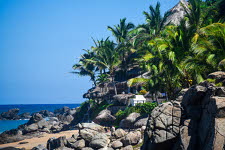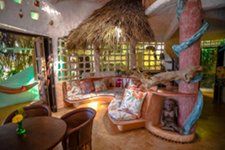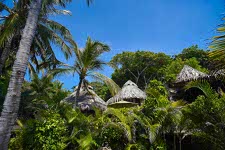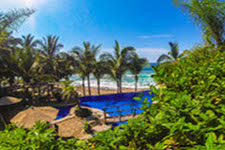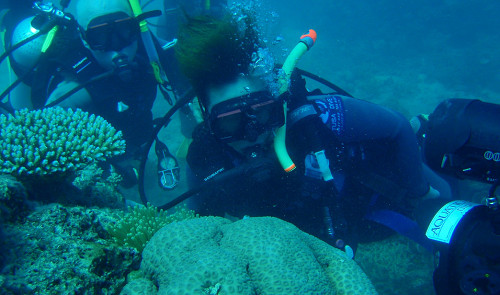Playa Escondida Resort - Sayulita, Mexico
Sayulita is a small town located about 40 km north of Puerto Vallarta in the mexican state of Nayarit. And we are pleased to be booking the Playa Escondida Resort. This spectacular destination is a secluded resort nestled in the hillside on a beautiful sand cove beach, and backed by Bird Canyon. The resort offers 29 unique rooms with beach view, ocean front, garden view, and Bird Canyon view accommodations.
Sayulita - a small town with a very special feel to it. The air is full of beach life, and the streets are full of people enjoying it. Street venders with their colorful wares, shops with their doors open to invite browsing and evening crowds of gringos and locals alike around the central plaza all give life to this village. Whether you are a surfer, sightseer or just curious, Sayulita offers a beach-style laid-back brand of Mexican culture. Slow paced and sunny!
Sun-worshipers, surfers and swimmers all relish Sayulita's beach time. The north facing bay has waves - usually big enough to surf - yet safe for swimming. The mostly sandy bottom makes good wading for the non-swimmer. Vendors walk the beach - hammocks, hats, shirts, silver, jewelry - to mention only a few of the variety of goods.
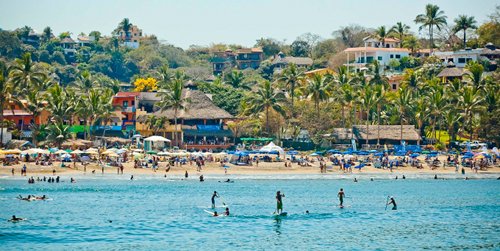
Let you heart run wild at the Playa Escondida Resort. Enjoy the beach, hike the canyon, ride a horse, try a stand up paddle board, enjoy a massage at the spa, play golf, experience the whales, participate in yoga sessions, scuba dive, or just do nothing if that suits your desires.
This resort does not offer all inclusive packages but does offer seasonal rates for room accommodations. Rooms range from $275 to $395 for two guests, high season and $195 to $330 for two guests, low season. We are offering packages that include dives provided by Sayulita Dive and Surf. Contact us for discounted packages for rooms and scuba diving.
Banderas Bay and Riviera Nayarit offers a variety of dive sites for all levels from Marietas Islands National Park to the dives off the Bay on Corveteña Island, where you will find a variety of stunning sea life. If you're a experienced diver or never in your life have dived we designed packages to suit.
Dive sites include Marietas Island Underwater Park, El Morro, La Corbetena, Los Anegados, and Carrilleros.
